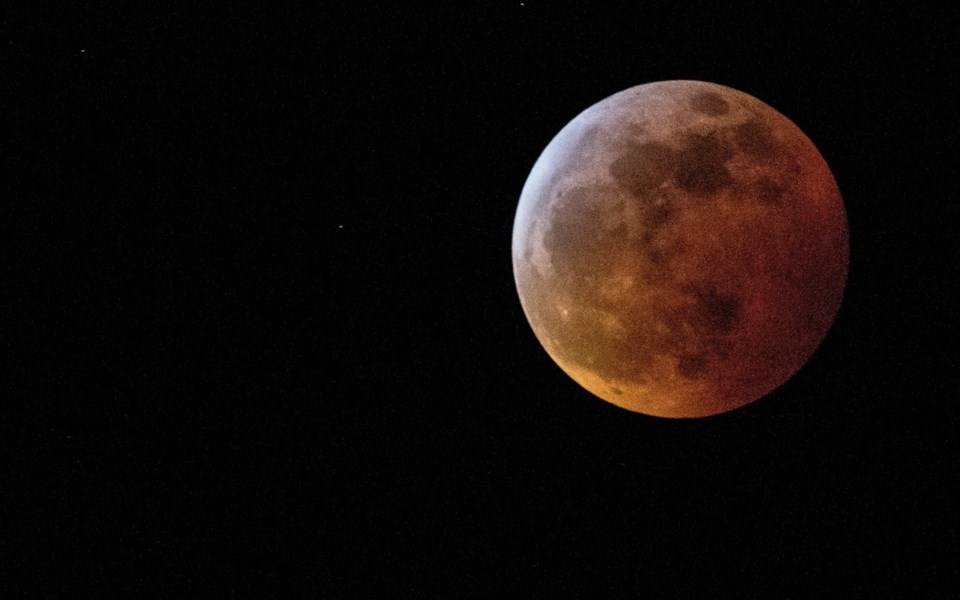If you had (by chance or design) the good fortune to look up to the stars on Sunday night, you may have caught sight of the "super blood wolf moon." This incredible natural phenomenon is not (as our ancestors feared, and as far as we know) a harbinger of doom. Instead, it is a natural, though a relatively rare sight.
Sunday marked the intersection of three distinct events: A full moon, a supermoon, and a lunar eclipse.
A full moon is a common and regular visitor, illuminating the night with its full, round face once every 27.3 days.
For the 12 or 13 full moons we see each year, three or four happen when the moon is within 10 per cent of its perigree—the closest it comes to the Earth in its orbit. This proximity to the Earth makes it a supermoon, and it appears about 14 per cent larger, and 30 per cent brighter.
Lastly, a lunar eclipse, which can only happen during a full moon, occurs approximately once a year when the Earth passes directly between the sun and moon, partially blocking the sun's light.
A total lunar eclipse, when the Earth completely blocks the sun from the moon, occurs every one to three years. These are the "blood moons," so called because of the vibrant red colour produced by the sun's rays passing around the Earth and through the Earth's atmosphere. This interference between the Earth's atmosphere and the sun's rays are the same reason we enjoy spectacular red sunsets, and the inspiring pink-orange alpenglow.
Now where does the "wolf" bit come in? Early peoples frequently followed the lunar calendar, instead of the solar calendar, or the Gregorian calendar that is now the norm. In the lunar calendar, each full moon cycle had a name. The "wolf moon" marked a time where hungry wolves were heard howling and seen stalking around villages. Other peoples named this moon the "old moon," "ice moon," "snow moon" or "moon after yule."
The "blood moon" also holds its place in history as a sign of serious trouble. As people who lived their life close to the rhythms of the land, water, and sky, I can imagine how alarming a lunar or solar eclipse might appear. Many cultures used it as a time to act and to help fight off the threat to their gods. Others used it as an excuse for war or for peace.
I'm glad to be part of a time where I can sit back and enjoy the show knowing the light will return.
If you missed your chance to howl at the moon, the next two full moons (Feb. 19 and March 20) will also be supermoons, and the next total lunar eclipse will be on May 26, 2021.
As for the next "super blood wolf moon?" You'll have to wait until 2036—lots of time to plan.
Mallory is a volunteer with the Whistler Naturalists. To learn more about Whistler's natural world, go to WhistlerNaturalists.ca.




